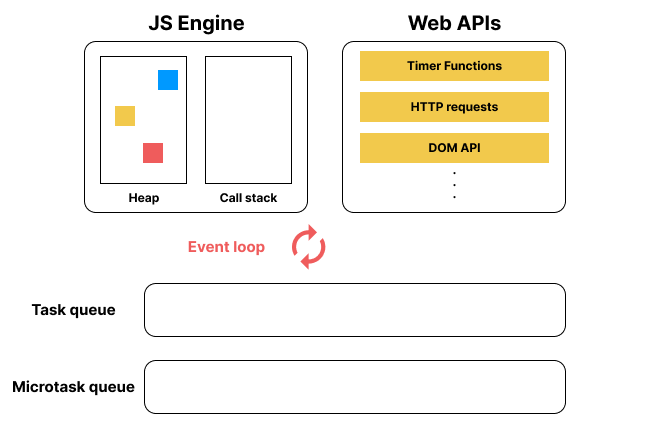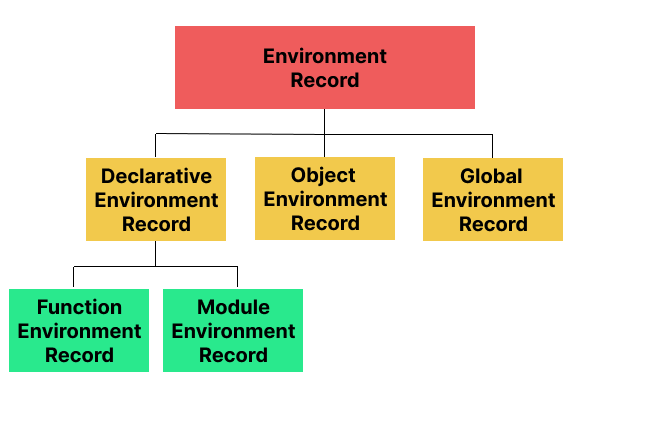자유로운 this
Javascript 'this' is not this.
Javascript에서 this는 this가 아니다. 그게 무슨 말인가? 정확히는 우리가 기대하는 this가 아닐 수 있다. this는 엄격 모드인지 아닌지에 따라서도 그 값이 다르며, 호출시점에 동적으로 결정된다. 이를 런타임 바인딩이라고 한다.
객체를 다루는 대부분의 언어에서 this는 인스턴스 자신에 대한 참조변수이다. 따라서 메소드가 참조하는 this는 항상 인스턴스 자체를 참조할 것으로 기대하고 프로그래밍하지만 Javascript에서는 다르다.
이해를 돕기 위해 예시를 하나 살펴보자.
아래 코드에서 someFunc()의 실행 결과는 무엇일까?
const obj = {
name: "omin",
sayHi() {
console.log(`hello ${this.name}`);
},
};
function someFunc(callback) {
callback();
}
someFunc(obj.sayHi);
hello omin을 출력할 것으로 예상했지만 비엄격 모드에서는 hello undifined가 출력되고, 엄격모드에서는 TypeError: Cannot read properties of undefined (reading 'name')라는 에러를 출력한다.
this가 정적으로 결정된다면 hello omin이 출력되는 것이 맞다. 하지만 Javascript에서 this는 함수 호출 시점에 참조할 객체가 동적으로 결정되기 때문에 우리가 흔히 기대하는 방식과는 다르다.
this를 차근차근 파해쳐보자.
this의 값
비엄격 모드에서 this는 항상 객체를 참조하며, 엄격 모드에서는 어떤 값이든 될 수 있다. 함수, 클래스, 전역 등 어떤 컨텍스트에서 등장하는지에 따라 this가 어떻게 결정되는지 살펴보자.
함수 컨텍스트
함수 내에서 this는 언어 차원에서 주어지는 인자라고 볼 수 있다. 아래 함수는 this를 명시적으로 받지 않았지만 에러가 나지 않는다.
function hello() {
console.log(this);
}
hello();
선언되지 않은 변수 something을 참조하는 것과는 다르다.
function hello() {
console.log(something); // Error
}
hello();
좀 더 구체적으로는 함수에서 this는 해당 함수를 호출하기 위해 접근한 객체를 참조한다.
function sayHi() {
console.log(this.name);
}
const obj1 = {
name: "omin",
};
const obj2 = {
name: "oms",
};
obj1.sayHi = sayHi;
obj2.sayHi = sayHi;
obj1.sayHi(); // omin
obj2.sayHi(); // oms
sayHi()는 한 번 선언되었지만 obj1과 obj2에 각각 메소드로 할당되어 호출된다. 이때 this는 sayHi()를 호출할 때 접근한 객체 각각을 참조한다. sayHi()가 변경된 것은 아닐까? 아래와 같은 비교를 통해 같은 sayHi() 메소드는 같은 함수를 참조하는 것을 알 수 있다.
console.log(obj1.sayHi === obj2.sayHi); // true
심지어는 객체 내 메소드로 생성된 경우에도 this는 생성 시점이 아닌 호출 시점에 결정된다.
const obj1 = {
name: "omin",
sayHi() {
console.log(this.name);
},
};
const obj2 = {
name: "oms",
};
obj2.sayHi = obj1.sayHi;
obj2.sayHi(); // oms
이 경우도 물론 두 객체 내 메소드 sayHi()는 같은 함수를 참조한다.
console.log(obj1.sayHi === obj2.sayHi); // true
만약 메소드가 접근하는 값이 원시값이라면 this는,
- 엄격모드: 원시값이 된다.
- 비엄격모드: 원시값의 래퍼 객체가 된다.
어떠한 값에도 접근하지 않고 호출한다면 this는,
- 엄격모드: undefined이다.
- 비엄격모드: globalThis이다. 브라우저의 경우 window, node 환경에서는 global.
// 예시 출처: mdn
function getThisStrict() {
"use strict";
return this;
}
function getThis() {
return this;
}
// 예시일뿐 실제로 내장객체의 prototype을 변경하지는 맙시다.
Number.prototype.getThisStrict = getThisStrict;
Number.prototype.getThis = getThis;
console.log(typeof (1).getThisStrict()); // number
console.log(typeof (1).getThis()); // object
console.log(getThisStrict()); // undefined
console.log(getThis()); // window | global (globalThis)
console.log(getThis() === globalThis); // true
콜백
콜백으로 함수를 넘기는 경우에도 보통 this는 undefined이고, 비엄격모드에서는 객체다. 하지만 보통의 내장 메소드에 콜백으로 넘기는 경우가 그런 것이지 항상 그런 것은 아니기에 명세와 공식 문서의 설명을 잘 참고하자.
function getThisStrict() {
"use strict";
console.log(this);
return this;
}
function getThis() {
console.log(this);
return this;
}
["omin", "oms"].forEach(getThisStrict); // undefined, undefined
["omin", "oms"].forEach(getThis); // global, global
일부 내장 메소드는 optional 인자로 this를 넘길 수 있으며, JSON.parse()의 reviver나 JSON.stringify()의 replacer의 경우 this 값이 undefined가 아니다.
["omin", "oms"].forEach(getThisStrict, { name: "omin & oms" }); // { name: 'omin & oms' }, { name: 'omin & oms' }
["omin", "oms"].forEach(getThis, { name: "omin & oms" }); // { name: 'omin & oms' }, { name: 'omin & oms' }
화살표 함수
화살표 함수는 자체적인 this를 가지지 않으며 렉시컬 환경에 의해 결정된다. 언어차원에서 하나의 인자로 제공되는 this가 화살표 함수에는 없으며, 함수 '선언' 시점에 this가 바인딩 된다.
const globalObj = this;
const hello = () => this;
console.log(globalObj === hello()); // true
아래 코드에서 getThisGetter는 this를 리턴하는 화살표 함수를 리턴한다. 이를 각각 obj1과 obj2의 메소드로 할당한 뒤, getter 호출 결과를 비교해보자.
"use strict";
function getThisGetter() {
return () => this;
}
const obj1 = {
name: "omin",
};
const obj2 = {
name: "oms",
};
obj1.getThisGetter = getThisGetter;
obj2.getThisGetter = getThisGetter;
const getter1 = obj1.getThisGetter();
const getter2 = obj2.getThisGetter();
console.log(getter1() === obj1); // true
console.log(getter2() === obj2); // true
console.log(getThisGetter()()); // undefinded
getter1의 호출 결과는 obj1과 같다. getter2의 호출 결과는 obj2와 같다.
이는 getThisGetter()의 호출 시점(getter 입장에선 선언 시점)에 각각 obj1과 obj2가 this로 바인딩 되었고, 화살표 함수가 외부 렉시컬 환경의 this를 바인딩하기 때문이다.
반면 getThisGetter()의 리턴 결과를 독립적으로 호출한 경우 바인딩 된 this가 전역 this이기 때문에 undefined를 반환한다.
또 화살표 함수는 call(), apply(), bind()를 사용해 이후 호출 시점에 this를 변경하려 해도 무시한다.
console.log(getter1.call(obj2) === obj2); // false
console.log(getter2.call(obj1) === obj1); // false
생성자 함수
new 키워드와 생성자 함수를 이용해 새로운 객체를 생성하는 경우 this는 인스턴스화 된 객체가 된다. 이 객체는 암시적으로 생성, 반환된다.
function Person(name, age) {
// this = {}; 암시적으로 빈 객체 할당
this.name = name;
this.age = age;
// return this; 암시적으로 this return
}
const person = new Person("omin", 100);
console.log(person.name); // omin
하지만 원시값이 아닌 값을 명시적으로 반환하면 this가 해당 값으로 대체된다는 점에 주의해야 한다.
function Person(name, age) {
// this = {}; 암시적으로 빈 객체 할당
this.name = name;
this.age = age;
return { name: "oms", age: 50 };
// return this; 암시적으로 this return해야 하지만 무시됨
}
const person = new Person("omin", 100);
console.log(person.name); // oms
원시값을 반환하면 그 원시값은 무시되고 암시적으로 생성된 this를 반환한다.
function Person(name, age) {
// this = {}; 암시적으로 빈 객체 할당
this.name = name;
this.age = age;
return "oms"; // 무시됨
// return this; 암시적으로 this return
}
const person = new Person("omin", 100);
console.log(person.name); // omin
클래스 컨텍스트
클래스의 인스턴스는 항상 new 키워드를 통해 생성된다. 이때 this의 동작 방식은 생성자 함수와 같다. this는 생성자 함수에서처럼 인스턴스화 된 객체를 참조한다. 또한 클래스 내 메소드의 this는 객체 리터럴에서와 마찬가지로 메소드를 호출하기 위해 접근한 객체이다.
클래스 내에서도 정적 컨텍스트와 인스턴스 컨텍스트로 this의 값이 결정되는데, 세부적인 부분은 Class에 대해 학습하며 더 자세히 알아보도록 하자.
전역 컨텍스트
전역 컨텍스트에서 this는 어떤 런타임 환경인지에 따라 다르지만 엄격, 비엄격모드에 따른 차이는 없다.
브라우저 환경에서 전역 컨텍스트의 this는 항상 globalThis, 즉 window이며, Node.js 환경에서 전역 컨텍스트의 this는 module.exports이다.
// 브라우저 환경
console.log(globalThis === window); // true;
console.log(this === window); // true;
// Node.js 환경
console.log(globalThis === global); // true;
console.log(this === module.exports); // true
console.log(this === global); // false
This 지정하기
Function.prototype.call(), Function.prototype.apply(), Function.prototype.bind(), Reflect.apply()를 통해 this를 지정할 수 있다.
기본적인 개념을 잡고가기 위해 Function.prototype 내 메소드를 위주로 살펴보자.
call()
call() 메소드는 this를 지정하여 함수를 호출한다. 인자로 제공하는 thisArg를 호출하는 함수의 this로 지정하며, 선택적으로 함수의 인자도 넘길 수 있다.
function sayHi(greeting = "Hi") {
console.log(greeting + " " + this.name);
}
const obj1 = {
name: "omin",
};
const obj2 = {
name: "oms",
};
sayHi.call(obj1); // Hi omin
sayHi.call(obj2); // Hi oms
sayHi.call(obj1, "Hello"); // Hello omin
sayHi.call(obj2, "Howdy"); // Howdy oms
apply()
apply()는 this를 지정하는 것은 call()과 같지만, 선택적으로 받는 인자가 배열 혹은 유사 배열 객체여야 한다는 점이 다르다. 유사배열 객체를 인자로 받으면 이를 destructuring 해서 함수의 인자로 전달한다.
const numbers = [5, 4, 3, 2, 1];
const maxNumber = Math.max.apply(null, numbers);
console.log(maxNumber); // 5
// same as
console.log(Math.max(...numbers)); // 5
직접적으로 call()과 비교하면 다음과 같다.
let numbers = [];
const numbersToPush = [1, 2, 3, 4, 5];
numbers.push.call(numbers, numbersToPush); // push([1, 2, 3, 4, 5])
console.log(numbers); // [ [ 1, 2, 3, 4, 5 ] ]
numbers = [];
numbers.push.apply(numbers, numbersToPush); // push(1, 2, 3, 4, 5)
console.log(numbers); // [ 1, 2, 3, 4, 5 ]
bind()
bind()는 this를 바인딩 한 새로운 함수를 생성한다. 한 번 바인딩된 함수의 this 값은 바뀌지 않는다.
const person1 = {
name: "omin",
getName() {
return this.name;
},
};
const person2 = {
name: "oms",
};
const boundGetName = person1.getName.bind(person1);
console.log(boundGetName()); // omin
// 호출 주체가 person2인데도 this는 person1을 참조
person2.getName = boundGetName;
console.log(person2.getName()); // omin
// 이미 바인딩된 함수의 this는 변하지 않음
const reboundGetName = boundGetName.bind(person2);
console.log(reboundGetName()); // omin
참고자료
메서드와 this
this
함수 호출 방식에 의해 결정되는 this
JavaScript: What is the meaning of this?
함수 바인딩
자바스크립트의 this는 무엇인가?
new 연산자와 생성자 함수

